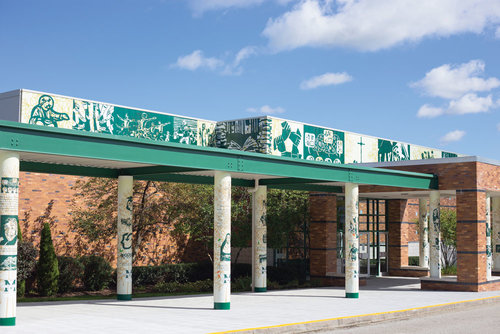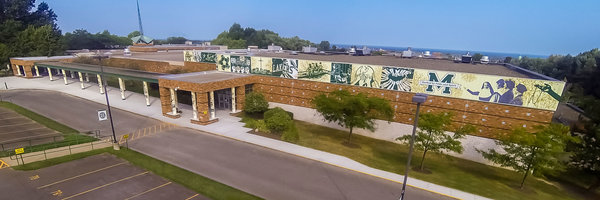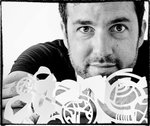by Carolyn Edlund
Artist Todd Scalise built a business of creating art in public places. He speaks about this market, and how other artists can take advantage of opportunities.

AS: How would you define Creative Placemaking?
TS: Creative Placemaking is a broad term that harnesses the power of the arts, culture, and creativity to serve a community’s interest to beautify the built environment, create a destination, and establish a recognizable and memorable identity. By “community” I mean any group of people organized for a specific purpose – schools, non-profit organizations, and businesses are also communities.
Higherglyphics focuses on the public art component of Creative Placemaking. An example of an educational project we are very proud of is the Mercyhurst Prep Mural Project which illustrates the 24 pillars of the Mercy mission. This project not only enhances the school facade with 8,200 sq. ft. of facade art but also acts as a recruitment tool for the school.
AS: How does this present a market for artists to sell their work?
TS: Public art has always been the most enduring way to get your message out, going back to the Trajan Column or the Sistine Chapel Ceiling. When an artist is commissioned to create public art, that art is constantly generating “buzz” because it is not behind closed doors. And we all know that there is no better form of advertising than having people talk about your art especially in the media. This is called “earned media”. Earned media, as opposed to traditional media, is critical for when an artist begins to ask more for their work.

AS: Is it difficult to become involved in making public art?
TS: Public art can be anywhere, especially in communities that have a need for revitalization. Many arts councils attract funding for public art for this very purpose. Additionally, Higherglyphics converts marketing dollars into earned media through the creation of public art. Residual streams of revenue through merchandising art generates lasting “buzz” for a project.
AS: What insights could you share that would help an artist just getting started in this market?
TS: Stay open to collaborations. These projects have a life of their own and differ from creating art alone in the studio. Often, public art requires a team of creative professionals, stakeholders, and contractors working under the direction of one artist, often referred to as the “art director”. This business structure is very similar to how most ad agencies and architectural firms are organized.
AS: Are these opportunities growing?
TS: Yes, public art is the one area of the arts with the greatest long-term growth. In 2012, arts and cultural production contributed over $698 billion to the U.S. economy, or 4.32 percent to the U.S. Gross Domestic Product – more than construction ($586.7B) or transportation and warehousing ($464.1B).
 Todd Scalise is the CEO & Founder of Higherglyphics LLC, a visual public relations firm that creates public art projects which combine community art with turnkey project management, expert installation, and merchandising to establish recognition for the communities they serve.
Todd Scalise is the CEO & Founder of Higherglyphics LLC, a visual public relations firm that creates public art projects which combine community art with turnkey project management, expert installation, and merchandising to establish recognition for the communities they serve.


I would love for you to read my article, “Making That Promise And Putting Your Best Self Forward” (published December 30, 2016 by Business Rocks digital magazine, Issue 47 link: http://businessrocks.co/bizrocks-issue-47-kerri-walker/). I discuss Charrette Methodology and how we should incorporate that into our workplace environment.